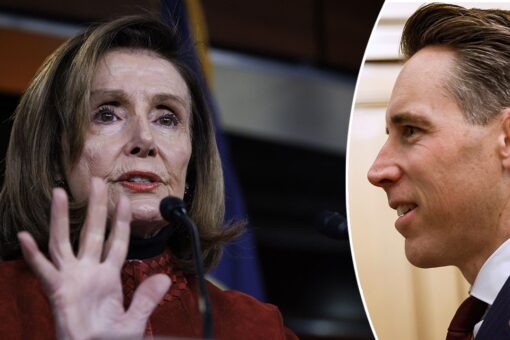FIRST ON FOX: The Department of Defense (DOD) denied an accusation of cooking its books on military recruitment numbers after the Pentagon released its most recent numbers.
The office of Rep. Darrell Issa, R-Calif., who served in the Army as a captain, accused the DOD of manipulating its recruitment numbers to appear to be meeting goals by lowering the numbers branches need to hit.
“The Pentagon is facing a self-inflicted crisis it can’t spin its way out of,” Issa said in a statement to Fox News Digital. “It’s impacting mission, manpower, and morale, and the current Commander in Chief is most to blame.”
ARMY MISSES RECRUITING GOALS WHILE OTHER BRANCHES FALL BEHIND FOR NEXT YEAR
“I served as a Lieutenant during President Carter, when our Army was demoralized. I was also a Captain during President Reagan, when we felt vigor, pride, and purpose,” Issa continued.
“Biden – like Carter – is the leader our soldiers and recruits don’t want to follow,” he added.
A source with extensive knowledge of current military practice, who requested anonymity to avoid professional repercussions, spoke to Fox News Digital after the DOD released their latest round of recruitment numbers that saw less than robust numbers and a shortfall in Army recruits.
The source says the numbers are not accurate and accused the DOD of shifting recruitment goalposts when it became clear branches would not meet their intake goals.
Secretary of Defense, Lloyd Austin, addresses the media during a press conference after the meeting of the Ukraine Security Consultative Group at Ramstein Air Base in Ramstein, Germany, Tuesday, April 26, 2022.
(AP Photo/Michael Probst)
“The DOD, the Pentagon, knew that they weren’t going to meet their number the first quarter. They didn’t. They had no one,” the source said. “And then around February and March, they started a message that they were going to reduce the force combat missions that ended, obviously, in Afghanistan.”
“They did it in Iraq in December,” they continued. “There’s less deployments.”
The source said that Secretary of Defense Lloyd Austin has the authority to raise or lower the total fighting force by “3 percent, give or take and what incurs a cost” before congressional authorization is required to go higher or lower.
“So they started messaging that they’re going to reduce the costs and that’s the shifting of the goalposts,” the source said. “And you started seeing that in February and March of this year.”
The Army missed its 2022 recruiting goals by 25%.
(U.S. Army)
The source also cited the military COVID-19 vaccine mandate, subsequent firings and freezing out of service members who refuse the vaccine or are awaiting religious exemption as another reason for the recruitment decline.
“It’s crushed morale, crushed unit cohesion, crushed camaraderie,” the source said.
The source added that, with the war in Ukraine and China’s rising global influence, “it’s a dangerous time to reduce military forces.”
Commander Nicole Schwegman, a Pentagon spokesperson, denied the DOD was manipulating recruitment numbers but simultaneously said the branches will adjust their goals based on how many people they are retaining and cutting along in addition with “attrition.”
“The Department does not manipulate military recruiting data,” Schwegman said. “As part of achieving their End-strength objectives, the Services set their own recruitment goals and will make adjustment to those goals based upon Service retention rates, separation rates, and attrition.”
Fox News Digital also asked the Pentagon if the DOD believes policies like the COVID-19 vaccine mandate or recommending Army soldiers go on food stamps to deal with inflation are contributing to the recruitment decline.
The DOD did not answer the question and instead blamed a multitude of other reasons for the decline in military recruitment.
“The Department believes that the challenges impacting today’s recruiting environment is a multi-variable problem,” Schwegman said. “There are a number of factors that have coalesced to create a uniquely challenging recruiting environment.”
Rep. Darrell Issa, R-California, speaks during a news conference in El Cajon, California, on Sept. 26, 2019.
(AP Photo/Gregory Bull)
“A variety of circumstances contribute to the growing military-civilian divide, including the shrinking/disappearing military footprint, a declining Veteran presence across society, and the uninformed and often misguided influence of military-related messaging by external organizations,” she continued.
Schwegman said the “external messages unduly highlight the risks of military service, keeping the physical and psychological risks of military service foremost in the minds of today’s youth and their influencers” and that, combined, “these factors have led to a youth market which is generally disinterested or unaware of the real and intrinsic value of military service.”
“Additionally, generationally low unemployment, the residual impact of the COVID pandemic, limited recruiter access to schools for over two years, and increasing opportunities available to today’s youth further exacerbate the difficult recruiting challenges the Department currently faces,” she continued.
Issa’s communications director Jonathan Wilcox told Fox News Digital the DOD’s shifting of the goalposts “matters because we’re supposed to give a damn when the country and the Congress are being clearly misled by this Administration — and about something as consequential as our Armed Forces.”
The U.S. Army announced on Sunday it came 15,000 soldiers short of meeting its 2022 recruiting goals, making the year the worst on record since the services switched to an all-volunteer force nearly 50 years ago.
CLICK HERE TO GET THE FOX NEWS APP
The Army brought in 45,000 new soldiers during the 2022 fiscal year, coming up 25% short of the 60,000 goal. While it was the only branch not to meet its goal for the year, the Marine Corps, Air Force and Navy all suffered recruiting struggles that forced them to dig into their pool of delayed entry program recruits, which put them behind on their ability to meet 2023 recruiting objectives.
The shortfall has caused speculation that the military may have to restructure itself and adjust to the reality that its current recruiting goals are not attainable. Leaders will also be forced to lean more heavily on National Guard and Reserve troops if recruiting numbers fail to rebound.




